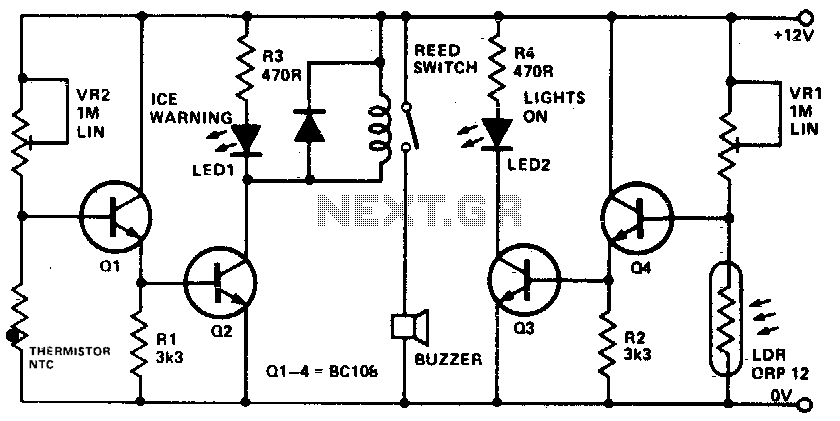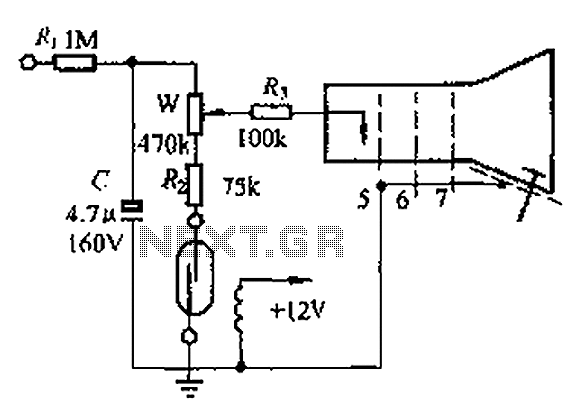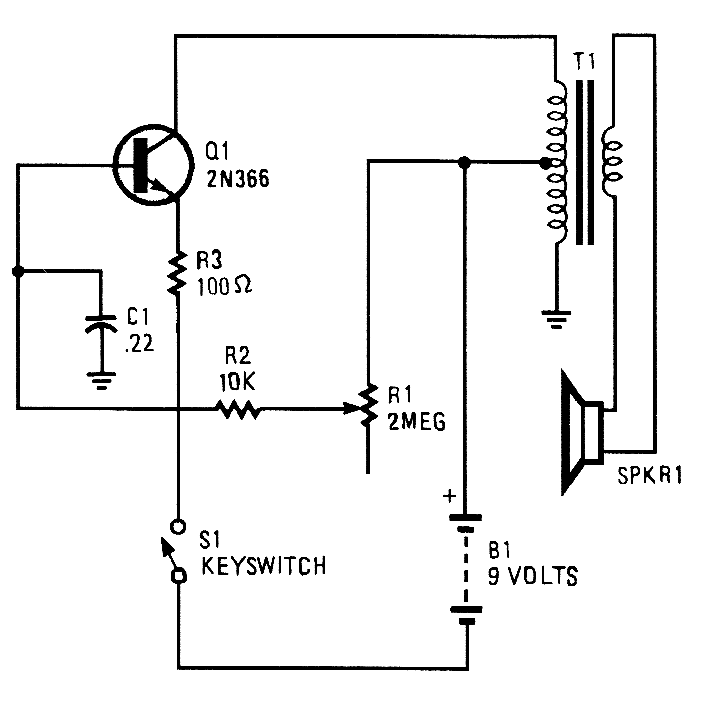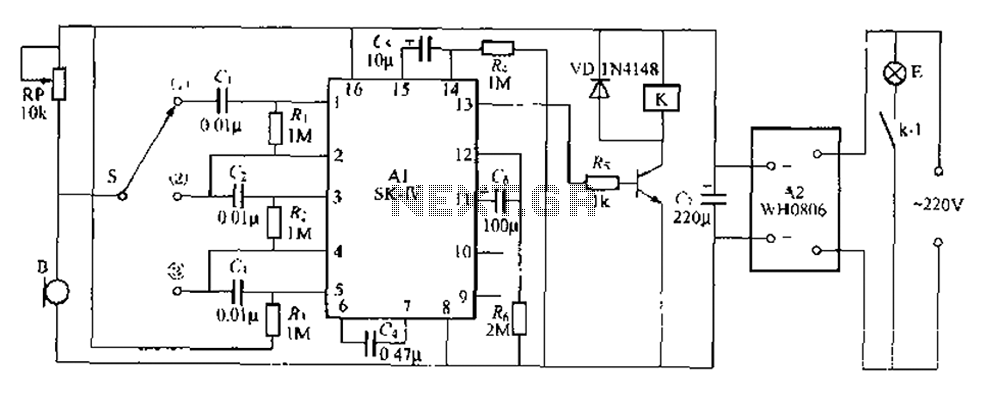
Ice warning and lights reminder

This device informs a driver whether their lights should be activated and warns them if the outside temperature approaches zero degrees Celsius by illuminating an LED and sounding a buzzer. The sensitivity can be adjusted using VR1, and the light-dependent resistor (LDR) should be adequately protected. Most high-gain NPN transistors are suitable for this application.
The described device functions as an integrated alert system for drivers, combining light and temperature sensing capabilities. The core components include a light-dependent resistor (LDR), which detects ambient light levels, and a temperature sensor that triggers alerts as the temperature nears the freezing point. The circuit design incorporates a high-gain NPN transistor to amplify the signals received from the LDR and temperature sensor.
The LDR’s resistance decreases with increasing light intensity, allowing the circuit to determine when external lighting conditions necessitate the activation of the vehicle's lights. Adjusting VR1, a variable resistor, fine-tunes the sensitivity of the LDR, enabling customization based on specific environmental conditions or driver preferences.
In terms of temperature monitoring, a suitable temperature sensor, such as an NTC thermistor or a dedicated temperature sensor IC, can be integrated into the circuit. When the temperature approaches zero degrees Celsius, the sensor outputs a signal that activates both the LED and the buzzer, providing a visual and audible warning to the driver.
The circuit should include protective measures for the LDR, such as a housing or shield to prevent physical damage and exposure to direct weather elements. Additionally, the overall design should ensure that the buzzer and LED are clearly visible and audible to the driver, enhancing safety during low-visibility conditions.
In summary, this device effectively combines light and temperature sensing to provide essential alerts to drivers, thereby improving safety and awareness on the road.This device will tell a driver if his lights should be on and will wam him if the outside temperature is nearing zero by lighting a LED and sounding a buzzer9 VR1 adjusts sensitivity and LDR should be well protected Most high gain NPN transistors will work.
The described device functions as an integrated alert system for drivers, combining light and temperature sensing capabilities. The core components include a light-dependent resistor (LDR), which detects ambient light levels, and a temperature sensor that triggers alerts as the temperature nears the freezing point. The circuit design incorporates a high-gain NPN transistor to amplify the signals received from the LDR and temperature sensor.
The LDR’s resistance decreases with increasing light intensity, allowing the circuit to determine when external lighting conditions necessitate the activation of the vehicle's lights. Adjusting VR1, a variable resistor, fine-tunes the sensitivity of the LDR, enabling customization based on specific environmental conditions or driver preferences.
In terms of temperature monitoring, a suitable temperature sensor, such as an NTC thermistor or a dedicated temperature sensor IC, can be integrated into the circuit. When the temperature approaches zero degrees Celsius, the sensor outputs a signal that activates both the LED and the buzzer, providing a visual and audible warning to the driver.
The circuit should include protective measures for the LDR, such as a housing or shield to prevent physical damage and exposure to direct weather elements. Additionally, the overall design should ensure that the buzzer and LED are clearly visible and audible to the driver, enhancing safety during low-visibility conditions.
In summary, this device effectively combines light and temperature sensing to provide essential alerts to drivers, thereby improving safety and awareness on the road.This device will tell a driver if his lights should be on and will wam him if the outside temperature is nearing zero by lighting a LED and sounding a buzzer9 VR1 adjusts sensitivity and LDR should be well protected Most high gain NPN transistors will work.





